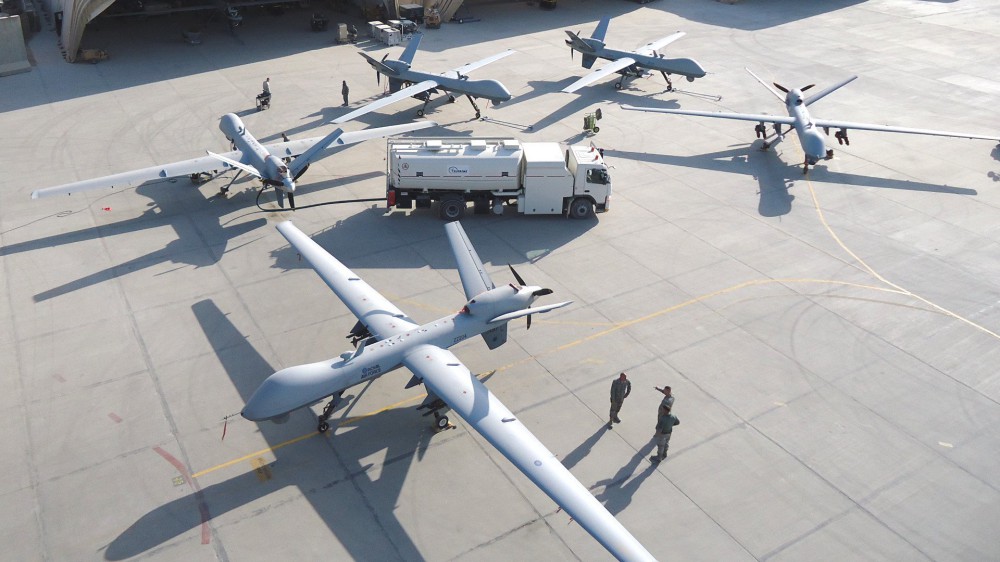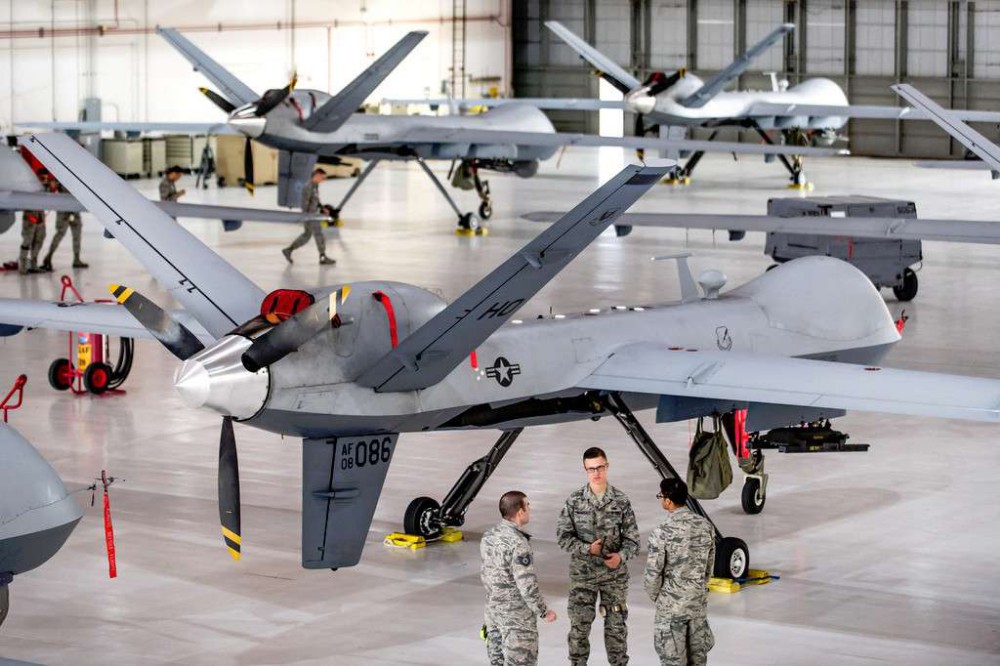The U.S. Navy is planning to hire drone-maker General Atomics to fly its own unarmed MQ-9 Reapers in support of U.S. Marines in Afghanistan. The service says the contractor-operated drones would provide a “surge” of intelligence, reconnaissance, and surveillance capabilities as the U.S. military expands its activities in the Central Asian country, which the U.S. Air Force is not able to provide at present.
On Jan. 9, 2018, the Naval Air Systems Command, or NAVAIR, announced the proposed deal on FedBizOps, the U.S. government’s main contracting website. The contract, which the Navy did not give an estimated value for, would cover up to a year of operations in Afghanistan running between the 2018 Fiscal Year, when began on Oct. 1, 2017, and the 2019 fiscal cycle.
The notice implies that this arrangement would be a sole-source contract the Navy would award directly to General Atomics without a lengthy competitive process. NAVAIR says “delaying the procurement” would be “impractical” given the urgent needs of Marines assigned to Task Force Southwest, which has the job of conducting advisory missions in Afghanistan’s infamous Helmand province, as well as portions of neighboring Nimroz province, both of which border Pakistan.
The contracting announcement doesn’t say how many Reapers would be involved in the contractor-run mission, or how many personnel it might take to manage the operation, which would not involve any armed sorties. The Navy did give very clear capabilities it was looking to procure, though.
As it stands now, NAVAIR is looking to hire General Atomics to provide a single “orbit” supplying coverage over one particular area 16 hours a day, seven days a week. The company could have to conduct missions lasting 24-hours or more in certain cases, but with advance notice.
A typical MQ-9 Reaper combat air patrol involves four individual aircraft, so that one aircraft is always on station, while another is heading back to base to refuel, and a third is heading out to take over the mission. The fourth drone is in reserve in case a malfunction, accident, or other issue sidelines one of the aircraft.
In order to make this work smoothly, the Navy proposed a so-called “remote-split” arrangement, whereby General Atomics’ crews would launch and recover the drones in Afghanistan using line-of-sight control, but pilots and sensor operators would perform the actual operations from a site in the United States via satellite link. The team in Afghanistan would also be in charge of maintaining the aircraft and their sensors. The U.S. Air Force already uses this method to conduct unmanned persistent surveillance operations in Afghanistan and elsewhere around the world.
In addition, the Navy says the Reapers themselves must carry a high-resolution imaging radar system, as well as a multi-spectral camera system. The Air Force’s latest MQ-9s already carry the Raytheon multi-spectral targeting systemand General Atomics’ own Lynx multi-mode radar and it’s likely this is the capability NAVAIR is looking for on the contractor-operated drones. There is no stated requirement for a wide-area persistent surveillance system with multiple cameras, which could be particularly useful for monitoring insurgent movements.
Separate from the actual business of operating the drones, the proposed Navy contract would also require General Atomics to provide liaisons in Task Force Southwest’s command center and other headquarters in order to aid in the sharing of data the unmanned aircraft gather during their flights. The goal is to make sure Marine intelligence elements and their troops on the ground in Afghanistan receive the information in a timely manner, which could be especially important for assisting in Afghan or other coalition operations against fleeting, time sensitive targets, such as small groups of insurgents or terrorists on the move or particular individuals.
NAVAIR’s proposed contract with General Atomics seems to be further admission that the Air Force simply cannot meet all of the demands the U.S. military has placed on it, especially as the United States steps up operations in Afghanistan again. It’s not clear when that might change, either.
The service is also planning to finally retire the MQ-1 Predator for good by the end of 2018 in favor of the MQ-9. It remains unclear what will happen to the older, less capable drones, but one possibility is that contractors could scoop them up and put them back into action as part of future contractor-managed deals. However, NAVAIR’s January 2018 notice specifically stated a requirement for Reapers.
Source: The Drive


